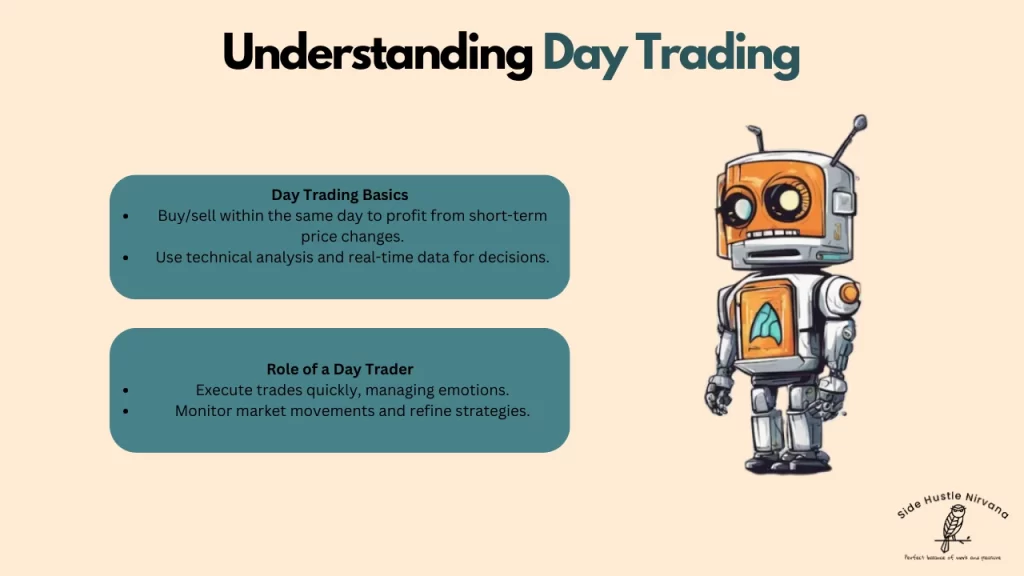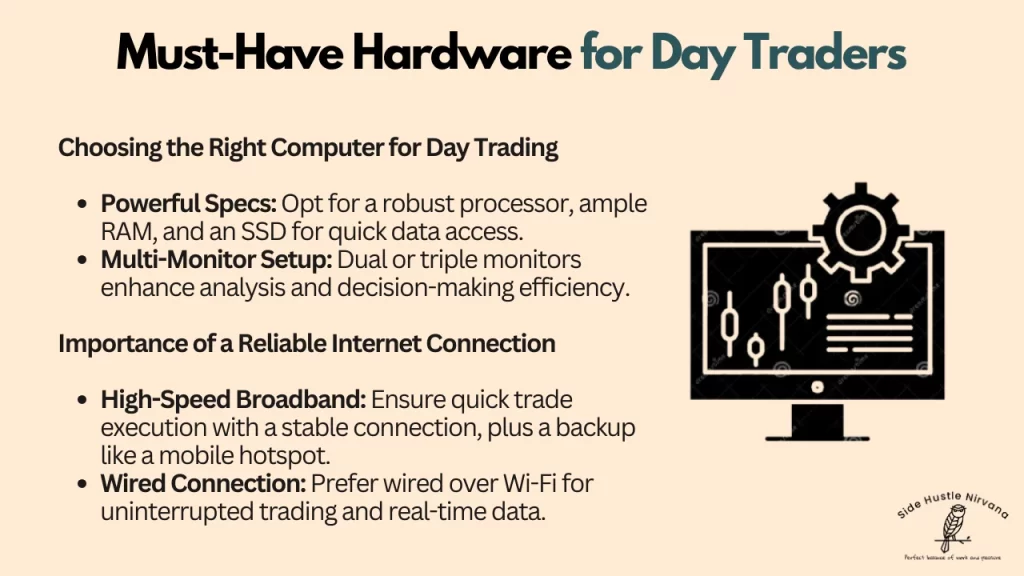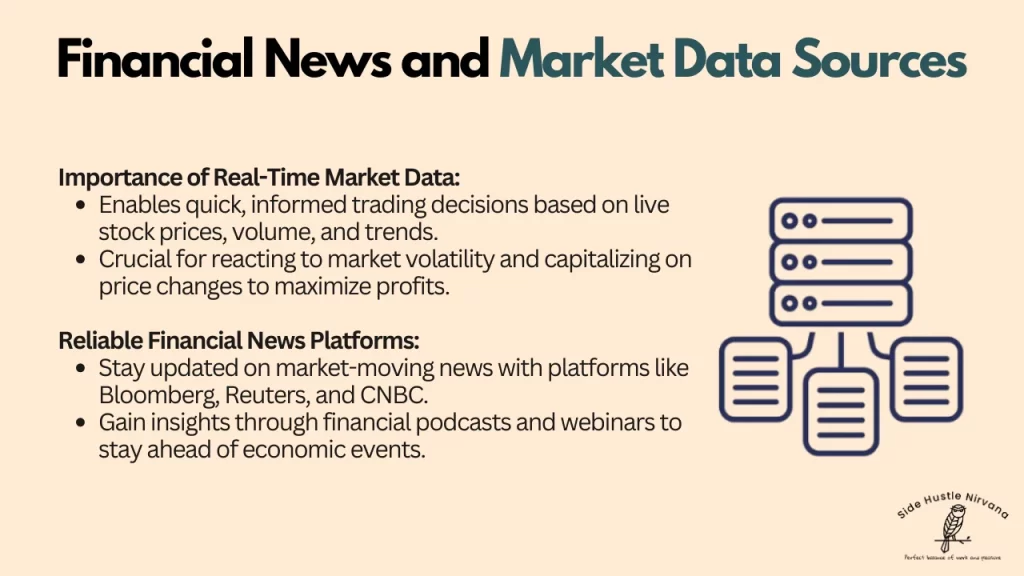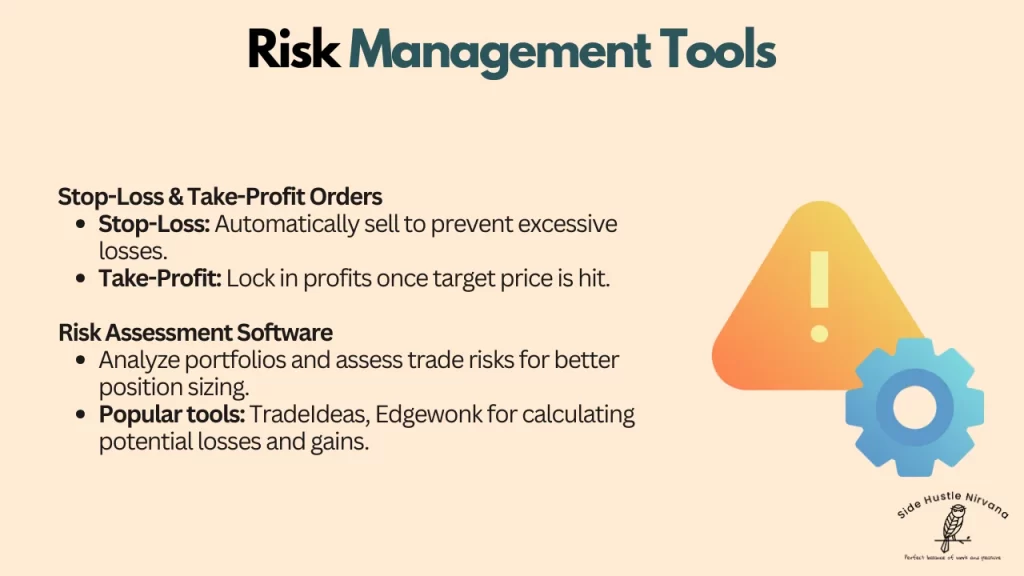Essential Tools Every Day Trader Needs
Day trading can offer significant rewards, but it comes with its own set of challenges and demands. To succeed in this fast-paced environment, traders need the right tools and equipment. In this article, we will explore the essential tools every day trader needs to enhance their trading experience and improve their chances of success.
Understanding Day Trading

The Basics of Day Trading
Day trading involves buying and selling financial instruments within the same trading day, with the objective of capitalizing on short-term market fluctuations. This practice typically revolves around stocks, options, currencies, and futures. Day traders leverage both technical analysis and market sentiment to make informed trading decisions.
Unlike long-term investors, who may hold positions for months or years, day traders aim to capture small price movements. As such, they often execute multiple transactions in a single day, which requires both speed and precision. Understanding market dynamics and having a solid grasp of trading strategies are crucial for success in this fast-paced environment. Additionally, day traders often utilize various tools and platforms that provide real-time data and analytics, enabling them to react swiftly to changing market conditions. The use of charting software, for instance, allows traders to visualize trends and patterns that can inform their trading choices.
The Role of a Day Trader
The primary role of a day trader is to identify trading opportunities in real-time and execute trades quickly. This requires not only analytical skills but also psychological resilience. Traders must manage their emotions and avoid making impulsive decisions that could lead to significant losses.
Effective day traders continuously monitor price movements, economic indicators, and news events, allowing them to make split-second decisions. Their ability to remain calm under pressure and stick to their trading plans is paramount to achieving long-term success. Moreover, many successful day traders develop a routine that includes pre-market research and post-market analysis to refine their strategies. They often engage in simulated trading to practice their skills without risking real capital, which can help build confidence and improve their decision-making processes. Networking with other traders and participating in online forums can also provide valuable insights and support, further enhancing their trading acumen.
Must-Have Hardware for Day Traders

Choosing the Right Computer
A reliable and efficient computer is vital for day trading. Traders should opt for a computer with a robust processor, ample RAM, and a solid-state drive (SSD) to ensure quick data access and multitasking capabilities. High-resolution monitors can also play a crucial role in tracking multiple charts and indicators simultaneously.
Many traders prefer dual or triple monitor setups, which allow them to display various datasets and tools at the same time. This configuration enhances their ability to analyze trends and make rapid decisions, ultimately improving their trading efficiency. Moreover, investing in adjustable monitor stands can help optimize ergonomics, reducing strain during long trading sessions. Some traders even utilize specialized software that allows them to create custom layouts for their screens, enabling them to focus on the most relevant information without unnecessary distractions.
Importance of a Reliable Internet Connection
In day trading, even a split-second delay in execution can significantly impact profits or losses. Therefore, having a reliable internet connection is non-negotiable. Traders should invest in a high-speed broadband connection and consider having a backup connection, such as a mobile hotspot, to ensure they remain online during critical trading hours.
Additionally, utilizing a wired internet connection is often preferred over Wi-Fi, as it generally provides a more stable and uninterrupted experience. A good internet connection not only helps in executing trades quickly but also facilitates the timely receipt of market news and data. Many traders also use network monitoring tools to keep an eye on their internet performance, ensuring that they can quickly identify and troubleshoot any connectivity issues that may arise. Furthermore, some traders opt for dedicated internet lines to minimize interference from other household devices, ensuring that their trading activities remain uninterrupted and efficient.
Software Requirements for Day Trading

Selecting a Trading Platform
Choosing the right trading platform is essential for executing trades efficiently and effectively. A good trading platform should offer robust charting tools, real-time data, and a user-friendly interface. Many platforms also provide customizable features, allowing traders to tailor their workspace according to their specific needs. Additionally, the platform should support a variety of asset classes, including stocks, options, and futures, to give traders the flexibility to diversify their portfolios.
Some popular trading platforms include MetaTrader, Thinkorswim, and NinjaTrader. It’s crucial to consider factors such as transaction fees, execution speed, and customer support when selecting the most appropriate platform for your trading style. Furthermore, many platforms now offer mobile applications, enabling traders to monitor their positions and execute trades on the go, which is particularly beneficial for day traders who need to respond quickly to market changes.
Charting and Analysis Tools
Charts and analysis tools are integral for day traders, allowing them to visualize price movements and identify patterns. Essential charting tools include moving averages, oscillators, and trend lines, which help traders conduct technical analysis effectively. In addition to these basic tools, advanced features like Fibonacci retracement levels and volume analysis can provide deeper insights into market behavior, helping traders refine their strategies.
Popular charting software options include TradingView and StockCharts, which offer various indicators and customization options. By utilizing these tools, day traders can enhance their analytical skills and make informed decisions based on historical data and current market trends. Moreover, many platforms now incorporate social trading features, allowing users to share insights and strategies with a community of traders, fostering a collaborative environment that can lead to improved trading outcomes. This access to shared knowledge can be invaluable, especially for novice traders looking to learn from experienced peers.
Financial News and Market Data Sources

Importance of Real-Time Market Data
Access to real-time market data is crucial for day traders. This information enables them to make timely trades based on the latest market movements. Many traders subscribe to platforms that provide live data feeds, offering insights on stock prices, volume, and other critical metrics.
In a volatile market, the ability to react quickly to price changes can be the difference between a profitable trade and a significant loss. Therefore, investing in a subscription that offers quick and accurate market data is a wise choice for serious day traders.
Reliable Financial News Platforms
To succeed in day trading, it is essential to stay informed about economic news and events that may affect market conditions. Reliable financial news platforms like Bloomberg, Reuters, and CNBC provide timely updates and analysis on key market events. They allow traders to stay ahead of potential market-moving news, helping them make informed trading decisions.
Furthermore, many day traders also tune into financial podcasts and webinars to gain insights from experienced traders and market analysts. Keeping abreast of economic indicators, earnings reports, and geopolitical developments is crucial for effective risk management.
Risk Management Tools

Stop-Loss and Take-Profit Orders
Risk management is an integral part of day trading, and using stop-loss and take-profit orders can help traders minimize losses and lock in profits. A stop-loss order allows traders to automatically sell their positions when a certain price level is reached, helping to prevent excessive losses.
Conversely, take-profit orders enable traders to secure profits when their desired target is achieved. Incorporating these tools into a trading strategy not only helps minimize risks but also instills discipline and provides a structured approach to trading.
Risk Assessment Software
Risk assessment software can offer valuable insights into a trader’s overall risk exposure. These tools help traders analyze their portfolios, assess individual trade risks, and determine appropriate position sizes. By using risk assessment tools, traders can develop a comprehensive risk management plan, which is vital for long-term success in the day trading arena.
Popular risk management software includes TradeIdeas and Edgewonk, providing traders with analytics that calculate potential losses and gains for every trade based on historical performance.
In conclusion, equipping oneself with the essential tools and resources outlined in this article can significantly enhance a day trader’s performance. By investing in the right hardware, software, and reliable information sources, traders can navigate the challenges of the markets more effectively and increase their chances of success.







